#TBT Hamilton 9379 Chronograph – An Oddity From the Early 90’s
When considering mechanical chronographs, the 1980’s and early 90’s are often viewed as forgettable. Blingy, bad taste, bi-metal, quartz, or me-too automatics are just some of the characteristics that come to mind to describe the era. Then you have the brands – Ebel, Movado, Concord, and even Omega making some very “of the times” pieces. Whatever you think about these watches and the era in general when it comes to watchmaking is likely a set of controversial topics best left for bar rooms or back alleys. Aside from the fact that some of these watches are starting to make their way back into the focus of collectors, it can’t be argued that this was a different period – Z. Cavaricci’s anyone? As always, though, there are exceptions to the rule and today’s #TBT subject is a pretty nice example of one such aberration. Let’s take a look at the relatively uncommon, yet affordable, Hamilton 9379 Chronograph.
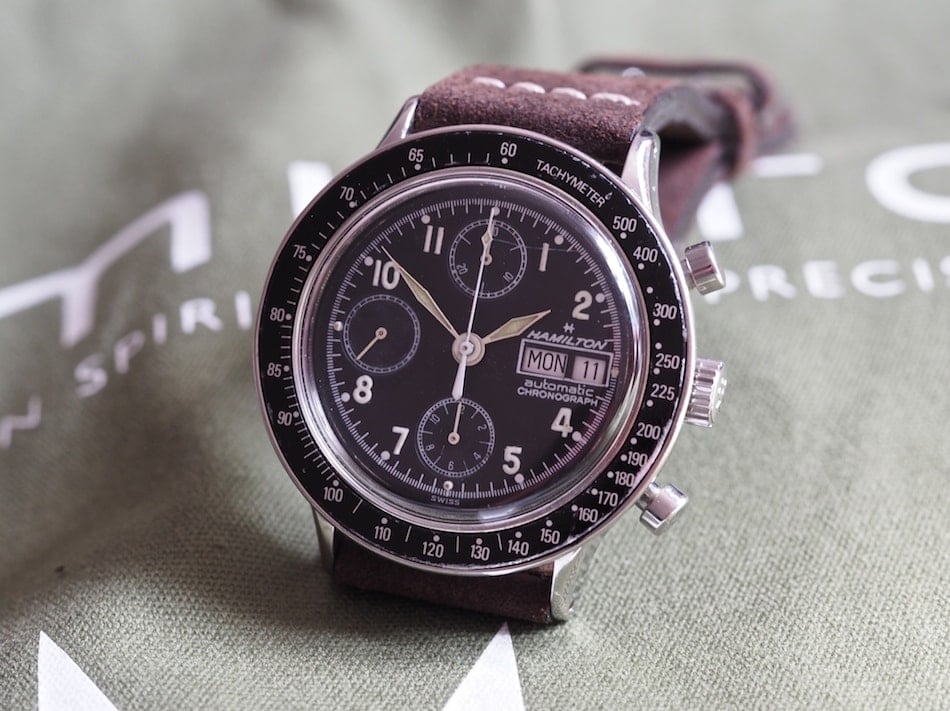
Before we get into the specifics of the Hamilton 9379 Chronograph, a little history is in order. I’ve certainly made mention of Hamilton’s Lancaster, Pennsylvania roots and because I lived there for a period, I’ll forever have a soft spot for the brand. But the reality is that after the company purchased the Swiss brand Buren in 1966, it’s days of making watches in the USA were numbered. By 1969, after a few years of parts sharing between European and American operations, a decision was made to close the Lancaster factory. In 1971, the Omega/Tissot concern purchased Hamilton and it ultimately became part of the Swatch Group in 1984. In the 80’s is where I first took notice of the brand and to be honest, they were making a lot of weak sauce quartz reissue stuff meant to look like iconic models such as the Ventura (my first “nice” watch ever) and the Piping Rock. With “Lancaster, PA” still on the boxes or case backs, but the watches having absolutely zero to do with the USA, the brand was seemingly struggling to move forward and choosing, instead, to rely heavily on a distant, but storied past. But, as we’ll see, it wasn’t all bad.
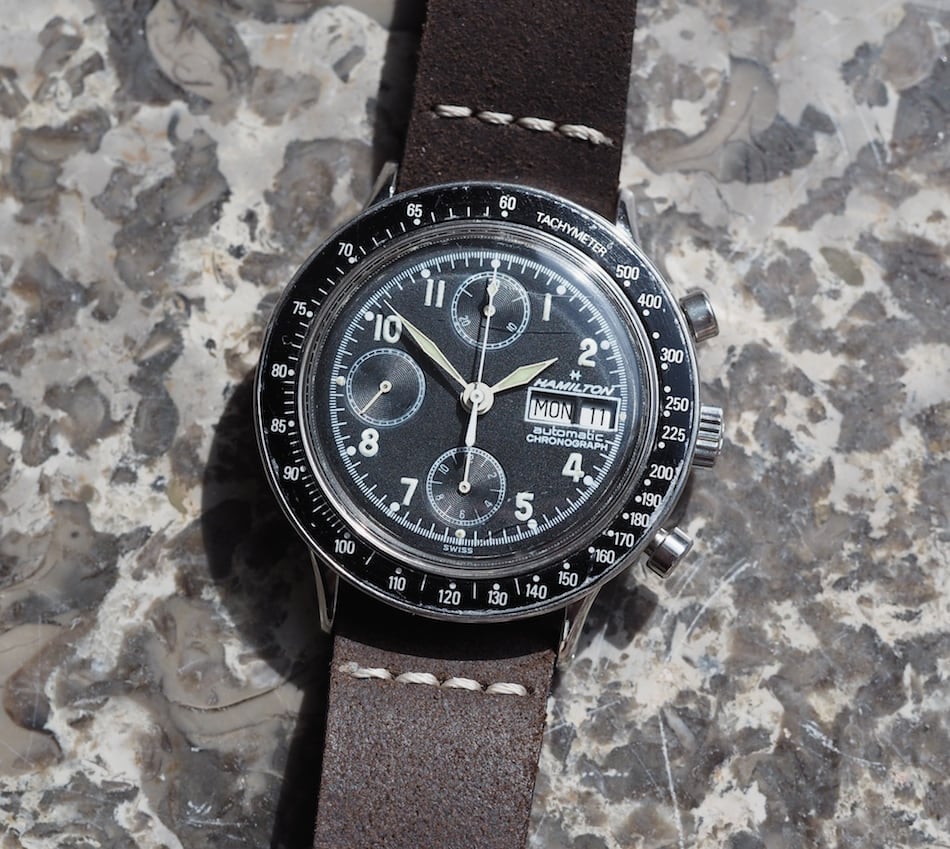
In the 80’s, Hamilton brought out its well-known Khaki line as a nod to its former in supplying troops with watches. Most of these were simply field watches, but this was and is clearly a hit for the brand. Alongside these, watches such as the Hamilton 9379 Chronograph were sold. These types of watches were a thankful relief rom the large dose of anonymous quartz pieces. With the 9379, we’re treated to a familiar formula that soldiers on today with many a brand.
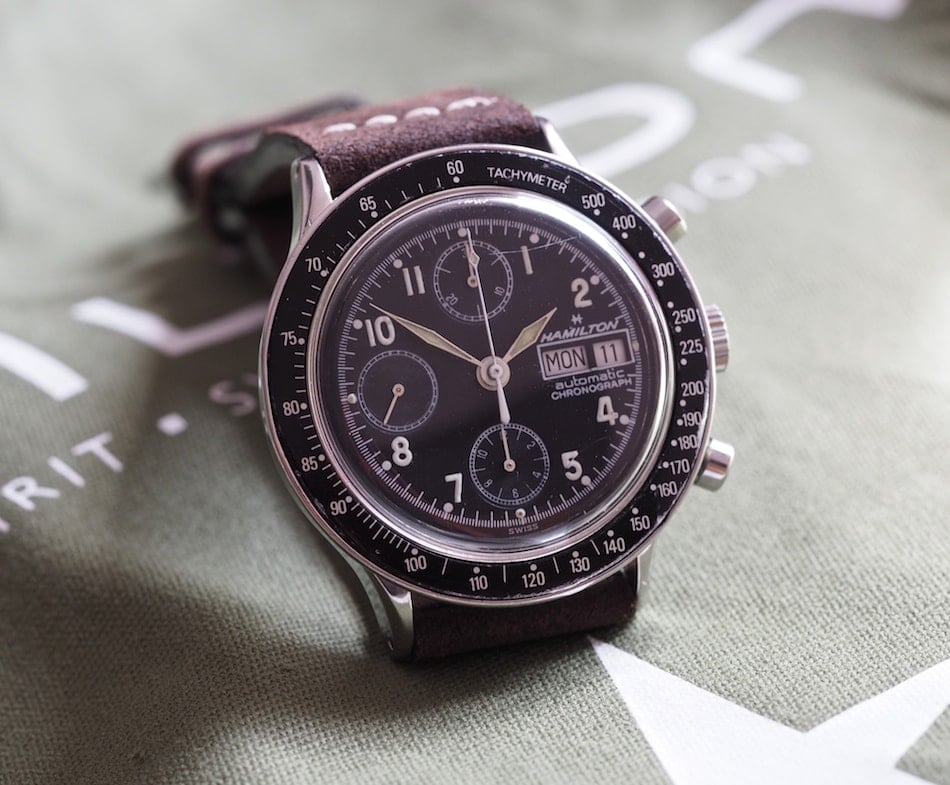
Inside the watch, we have the familiar Valjoux 7750, but carrying both a day and a date function. In the variant you see here, the watch is in stainless steel (variants existed – perhaps not carrying the “9379” model name – with some gold touches as well). It carries some seriously desirable dimensions as well at 45mm lug to lug, a 38mm case, 40mm bezel, and a 20mm lug width. If you’re counting, that’s in the wheelhouse of about 95% of watch people I know. But that’s not all…
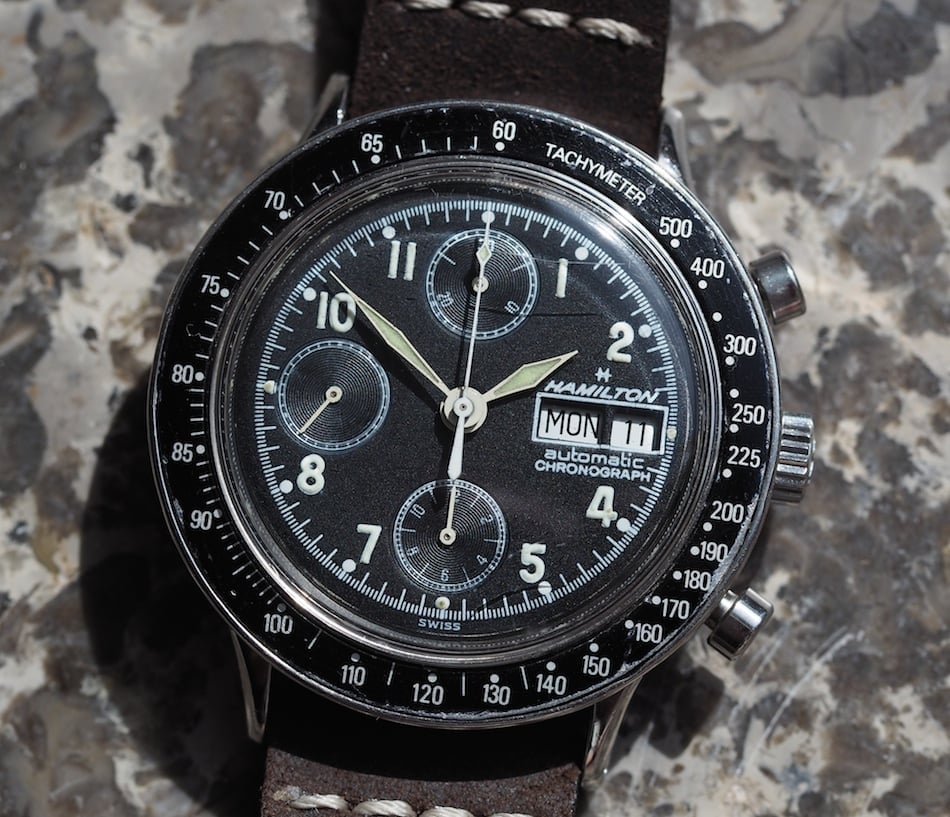
I am not sure who designed the Hamilton 9379 Chronograph or which Swatch Group parts bin was accessed, but there’s some seriously good stuff here. First off, the 9379 contains a wonderfully vintage-esque domed acrylic crystal (mine is complete with scratches). This alone provides warmth to the dial that would have been lost if glass had been used. Then, and it’s not really a “part”, but the lugs are drilled through for easy strap changes – just a good trait, isn’t it? Hamilton went with a nicely signed crystal that makes winding the often not-so-enjoyable 7750 worthwhile.
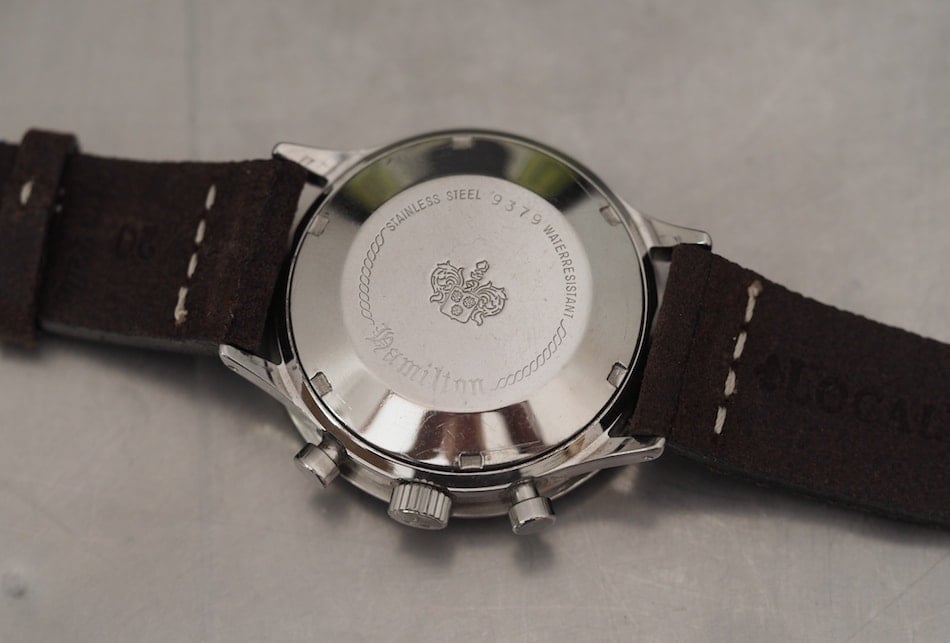
And the stubby pushers complement the case perfectly. The watch even features a lovely Speedy-like aluminum tachymeter bezel. Dial wise, the watch carries a military theme with lumed Arabic numerals at the hours against a matte black background. White lettering breaks up the stark simplicity along with subtly ridged sub registers. But those hands…damn. Spade hands were used on this model and they’ve aged differently versus the dial to the extent that they almost look as if they were made from tritium. The look great, though, and the slender central chrono hand tops it all off perfectly.
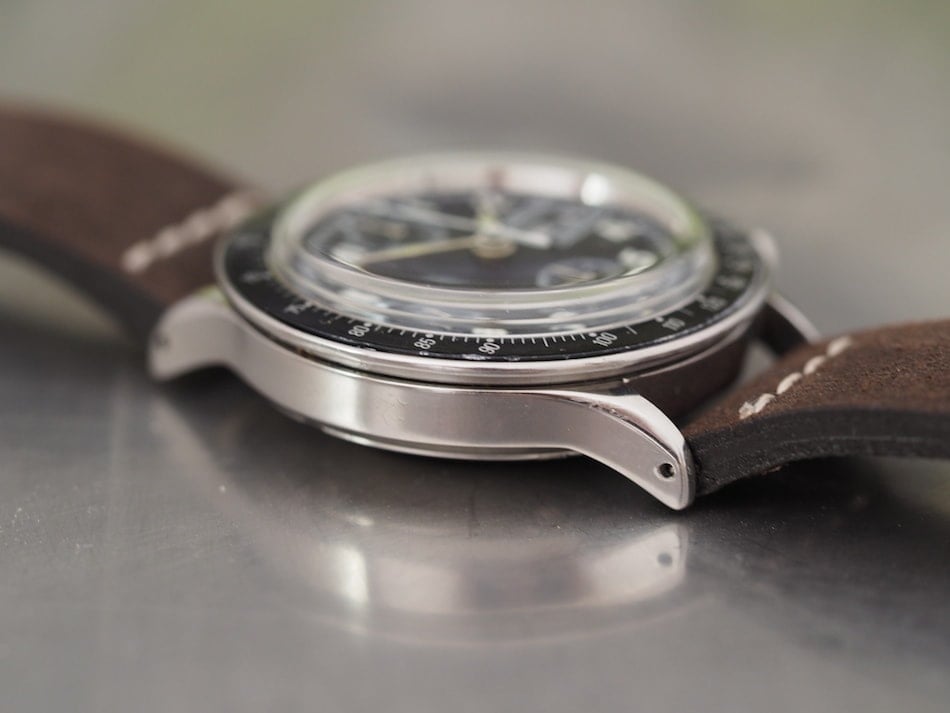
The history on the Hamilton 9379 Chronograph is a bit unclear, but most associate it with the 80’s and early 90’s. Depending on the variant, some feel that it is yet another oddball piece made for the always watch hungry Italian market (like the Bulova Sea Hunter we reviewed previously). Myron Erickson of Rover Haven – we reviewed his great straps in the past – did a nice job of documenting a number of Hamilton chronographs and you can see some of the 9379 variants on his site. Hopefully this won’t lead some of you down a rabbit hole of spending, but if you can find the watches, you’ll likely be pleasantly surprised with the prices.
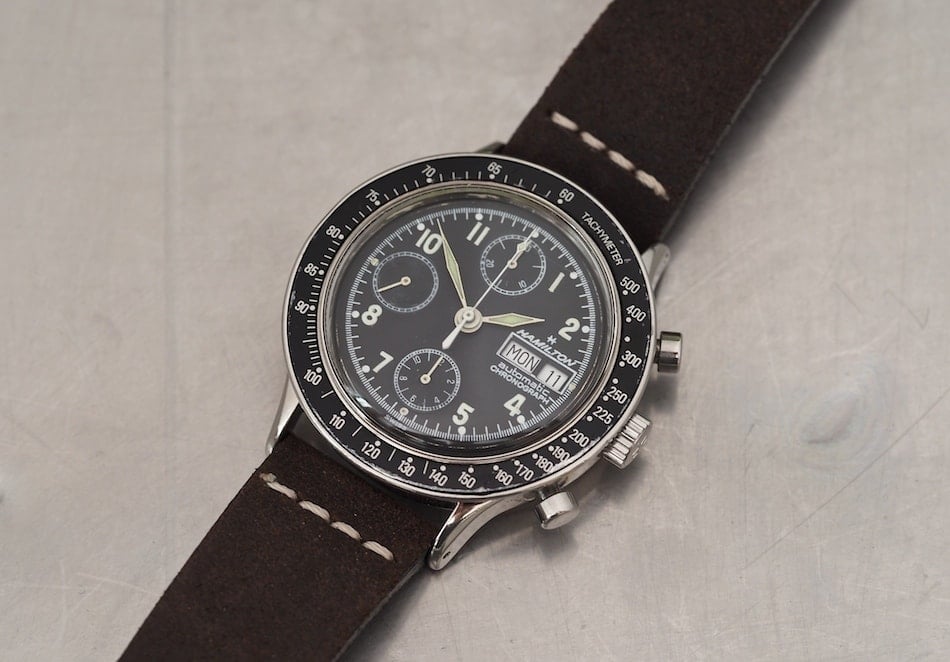
In a world that suddenly finds the Tudor Big Block a hot commodity – it is a commodity in my opinion and it uses the same mechanicals as this watch – the Hamilton 9379 Chronograph continues to fly well below most collector’s radars. These Hammy’s rarely come up for sale, but when they do, they often sit there. It’s a funny thing as I think most simply don’t know what they are or never bother to click on the sale posting. I say “funny” because when I post pics of this watch, it receives near universal praise. So, my advice is to grab one of these sweet pieces and expect to pay roughly – wait for it – $800 for a great example that may even include box and papers. For a neo-vintage watch with a household name that can be worn every day, and easily under a shirt, that’s a steal.
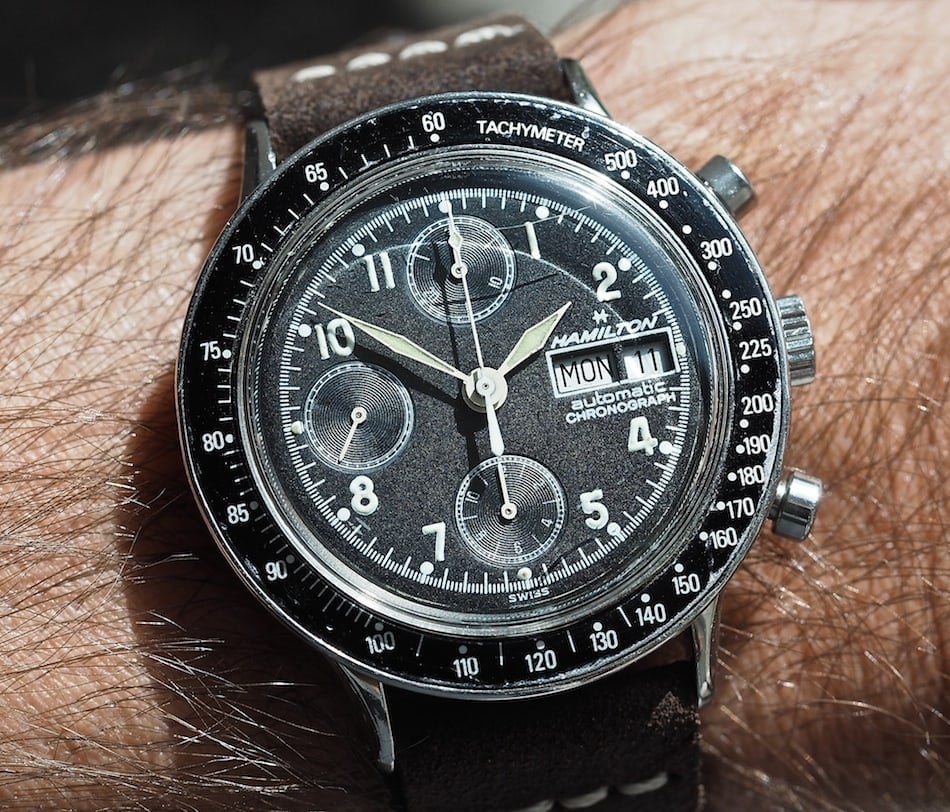
Despite the use of the 7750 in the Hamilton 9379 Chronograph, the watch wears far thinner than you might expect. This, combined with its no-nonsense looks, make it the perfect “go to” piece when I am traveling to somewhere where bringing an older piece is unadvisable – for whatever reason – but I still want to look down at my wrist and get that warm and fuzzy vintage feeling.
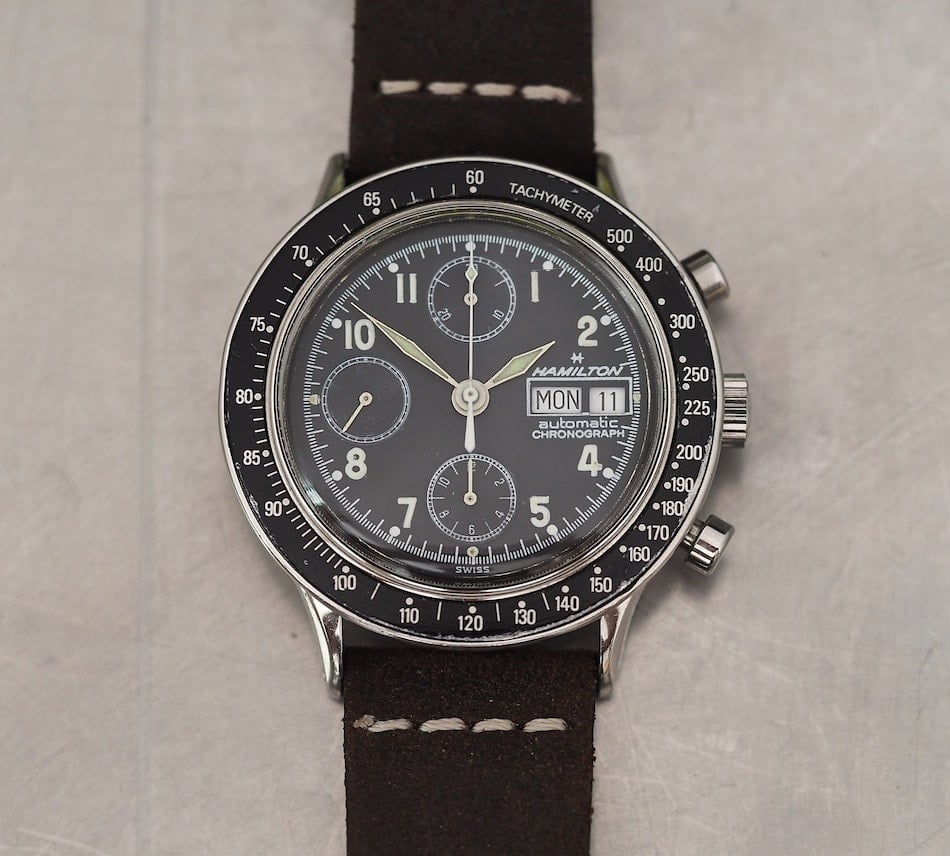
The Hamilton 9379 Chronograph is an oddity for the 80’s and 90’s with its classic looks and full suite of prior generation-looking components. It’s a serious bargain, uses a proven movement, and carries a household name that’s still around today. Time will tell if watch collectors begin to appreciate this oddball and if not, perhaps it’s your gain.












